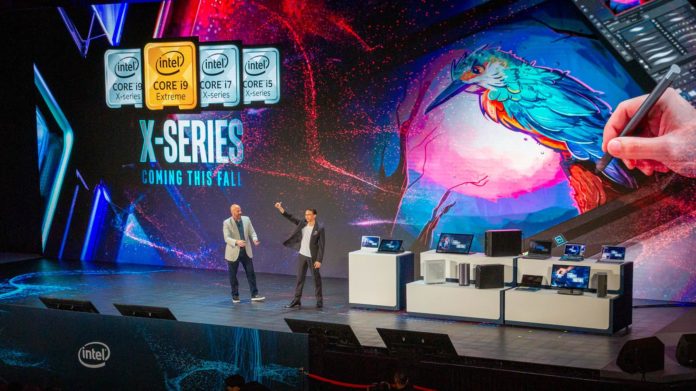So, here’s something you don’t hear every day. Intel CEO, Bob Swan has claimed that having more than 90% share of the x86 CPU market has made them complacent. More context right? Okay, buckle up. In a recent interview with the man leading team blue, WCCFTech got some interesting answers. The most intriguing was with regard to Intel’s majority share in the CPU market.
Over the past decade, Intel has had a near-monopoly in the x86 CPU market, with control of more than 90% of the market share. For most, this would be something worth remembering. However, Swan believes that this mindset of ruling over the majority share in the CPU market has cost Intel. He claims that this made the company complacent and resulted in many missed opportunities. In fact, he even said that he’s trying to destroy the thinking of having a 90% market share in the CPU side and instead wants people to come into office thinking Intel has a 30% market share in “all Silicon”.
We think about having 30% share in a $230 [silicon] TAM that we think is going to grow to $300B [silicon] TAM over the next 4 years, and frankly, I’m trying to destroy the thinking about having 90% share inside our company because, I think it limits our thinking, I think we miss technology transitions. we miss opportunities because we’re, in some ways pre-occupied with protecting 90, instead of seeing a much bigger market with much more innovation going on, both inside our four walls, and outside our four walls, so we come to work in the morning with a 30% share, with every expectation over the next several years, that we will play a larger and larger role in our customers success, and that doesn’t just include CPUs.
Bob Swan, Intel CEO
That’s a rather unique strategy the Intel CEO is adopting, although I’m not certain whether it’s out of desperation or something else. Regardless, being overconfident has most certainly cost Intel. The recent trends in the CPU market are almost analogous with Aesop Fable about “The Tortoise and the Hare”.

The other pressing questions were of course regarding Intel’s troubles with 10nm and the coming transition to 7nm. Swan said repeated what Intel reps have been saying over the years. Something along the line of growth not meeting demand. Attributing a global CPU shortage to a “miscalculation” or error in judgment is a rather petty excuse. Whatever the reason may be, it has cost Intel. OEMs have started adopting AMD’s new Ryzen CPUs and in the DIY space, it has made it even hard for Intel’s 14nm chips to compete with AMD’s new Matisse lineup that is both faster as well as more efficient. Here’s the complete transcript.
How we got here is really kind of threefold, one we got a lot faster than we expected and the demand for CPUs and servers grew much faster than we expected in 2018. You’ll remember we came into 2018 projecting a 10% growth and we grew by 21% growth so the good news problem is that demand for our products in our transformation to a data-centric company was much higher than we expected.
Secondly, we took on a 100% market share for smartphone modem and we decided that we would build it in our fabs, so we took on even more demand.
And third, to exacerbate that, we slipped on bringing our 10nm to life and when that happens you build more and more performance into your last generation for us – 14nm – which means there is a higher core count and larger die size.
So those three – growing much faster than we thought, bringing modems inside and delaying 10nm resulted in a position where we didn’t have flexible capacity. – Intel CEO Bob Swan
Bob Swan, Intel CEO



I call bs. If amd wasn’t breathing down their necks, it would be the same old song and dance. Stagnate until competition catches up.